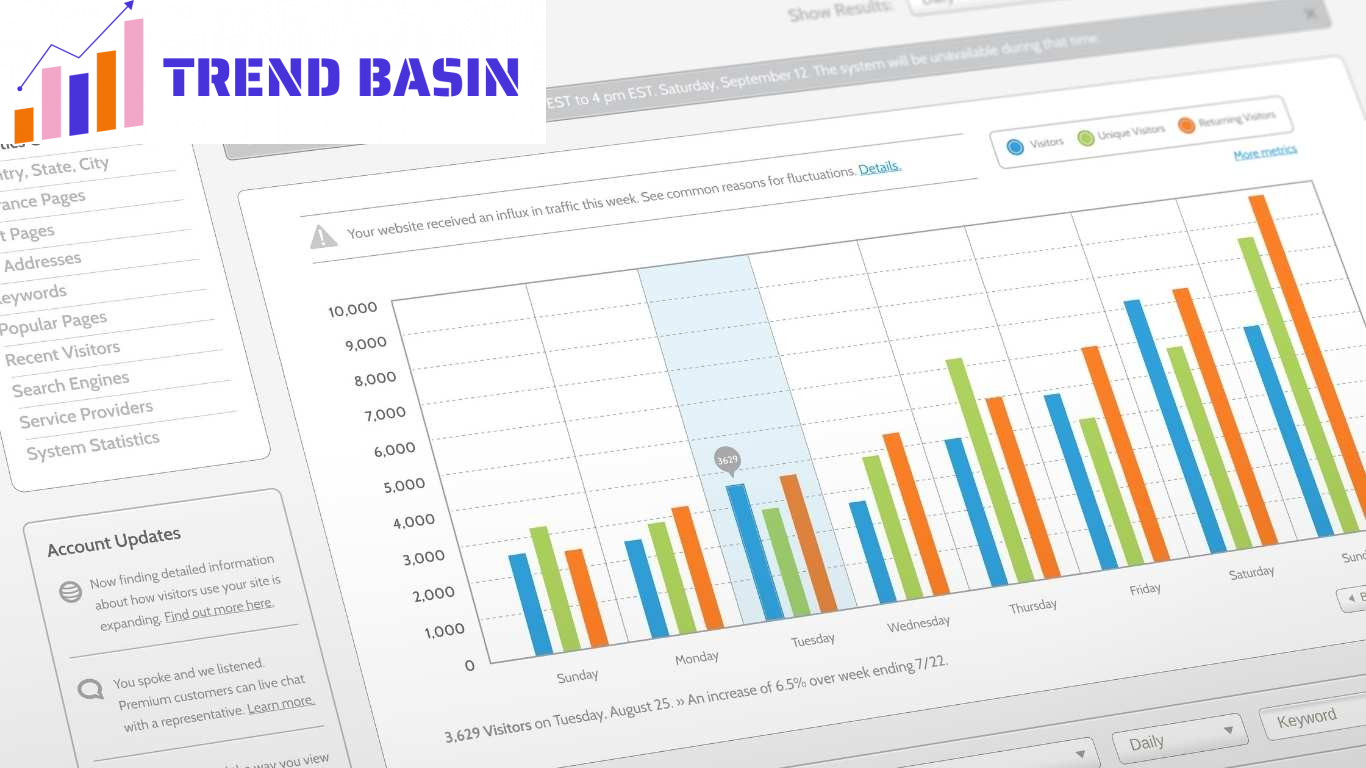
Multilingual SEO Tips to Reach a Global Audience
Implementing multilingual SEO is essential for reaching a global audience and ensuring your website is accessible to users in different languages.
Here are some key tips and statistics researched by Trend Basin team to help you optimize your site for multilingual SEO.
Table of Contents
ToggleKey Takeaways
- Understand Your Audience: Identifying languages, locations, and behaviors is critical.
- Keyword Research: Use international keyword tools for relevant searches.
- Dedicated URLs: Create separate URLs for different languages.
- Hreflang Tags: Indicate language and regional targeting.
- Localize Content: Adapt content to cultural preferences.
- Performance Monitoring: Use analytics to track effectiveness.
Key Tips for Multilingual SEO
1. Understand Your Target Audience
Mapping Your Audience
- Identify Languages: Determine the languages spoken by your target audience to tailor your content accordingly.
- Location Analysis: Map out the geographical areas where your target languages are spoken to inform your SEO strategy.
Determine SEO Needs
- Multilingual vs. Multiregional: Assess whether you need multilingual SEO (for different languages) or multiregional SEO (for different regions speaking the same language) (Welocalize) ¹(https://www.welocalize.com/insights/maximizing-your-websites-global-reach-with-multilingual-seo-welocalize/).
- Cultural Considerations: Understand cultural nuances that may affect content preferences in different regions.
Audience Personas
- Create User Personas: Develop user personas for each language or region, outlining demographics, preferences, and pain points.
- Conduct Surveys: Use surveys or polls to gather insights directly from your audience about their needs and expectations.
2. Conduct International Keyword Research
Tools for Keyword Research
- Google Keyword Planner: Use this tool to find relevant keywords in various languages.
- SEMrush and Ahrefs: These tools can help uncover keyword trends specific to different regions and languages.
Analyzing Search Behavior
- User Intent: Understand what users are searching for in different languages to create content that meets their needs.
- Keyword Variations: Look for variations of keywords that may exist in different languages, considering local slang or colloquialisms.
Competitor Analysis
- Review Competitor Keywords: Analyze keywords that competitors are targeting in different languages to identify gaps in your strategy.
- Identify Content Opportunities: Discover content topics that are performing well for competitors, which can inform your own content strategy.
3. Create Dedicated URLs for Different Languages
URL Structure Options
- Subdirectories: Use URLs like example.com/fr/ for the French version of your site.
- Subdomains: Utilize subdomains such as fr.example.com to differentiate content by language.
- Country-Code TLDs: Consider using country-specific domains, like example.fr, to target local audiences more effectively (Feather) ²(https://feather.so/blog/multilingual-seo-best-practices).
SEO Benefits of Separate URLs
- Clear Indexing: Separate URLs help search engines index content more effectively.
- Improved User Experience: Users can easily find the content in their preferred language, enhancing their experience on your site.
Considerations for Choosing URL Structure
- SEO Impact: Research the SEO implications of different URL structures to make an informed decision.
- User Preferences: Gather user feedback on preferred URL structures to enhance usability.
4. Use Hreflang Tags
Importance of Hreflang Tags
- Language Targeting: Implement hreflang tags to indicate the language and regional targeting of each page. This helps search engines understand which version of your content to show users based on their language and location (Feather) ²(https://feather.so/blog/multilingual-seo-best-practices).
- Avoid Duplicate Content Issues: Hreflang tags help prevent duplicate content problems by indicating the intended audience for each page.
Implementing Hreflang Tags
- Code Placement: Place hreflang tags in the HTML header or in the XML sitemap to ensure search engines recognize them.
- Tag Format: Use the correct format for hreflang tags, specifying both the language and region (e.g.,
en-USfor American English).
Testing Hreflang Implementation
- Tools for Validation: Use tools like Google Search Console to verify the correct implementation of hreflang tags.
- Monitor for Errors: Regularly check for errors or issues with hreflang tags that may affect indexing.
5. Optimize Meta Tags and URLs
Crafting Meta Tags
- Localized Meta Titles and Descriptions: Ensure that your meta titles and descriptions are optimized for each language. This improves visibility in search engine results for different languages (Feather) ²(https://feather.so/blog/multilingual-seo-best-practices).
- Keyword Integration: Incorporate relevant keywords into meta tags to enhance searchability.
URL Optimization
- Descriptive URLs: Create URLs that are descriptive and include keywords relevant to the language version.
- Consistency: Maintain a consistent structure across different language versions to aid usability.
Content Preview and Rich Snippets
- Structured Data: Implement structured data to enhance the way your site appears in search results, improving click-through rates.
- Localize Snippets: Ensure rich snippets are relevant to the local audience to increase engagement.
6. Localize Your Content
Beyond Translation
- Cultural Adaptation: Go beyond simple translation; adapt your content to resonate with the cultural nuances and preferences of your target audience (GetBlend) ³(https://www.getblend.com/blog/optimizing-content-for-multilingual-seo/).
- Local Idioms and Examples: Use local idioms, examples, and references that are relatable to the audience in that specific region.
Content Formats
- Adjust Formats: Consider different formats preferred in various cultures, such as date formats, currency, and even measurement units.
- Tailored Marketing Messages: Customize your marketing messages to align with local customs and cultural values.
Engaging Local Influencers
- Collaborations: Partner with local influencers who understand the cultural context to promote your content.
- User-Generated Content: Encourage local users to create content that reflects their experiences and perspectives, enhancing relatability.
7. Build High-Quality Backlinks
Importance of Backlinks
- Acquiring Quality Links: Focus on acquiring backlinks from reputable websites in different languages to improve your site’s authority (Feather) ²(https://feather.so/blog/multilingual-seo-best-practices).
- Guest Posting and Collaborations: Engage in guest posting or partnerships with local influencers to enhance your backlink profile.
Strategies for Building Backlinks
- Content Marketing: Create valuable content that naturally attracts backlinks from other sites.
- Outreach Campaigns: Conduct outreach campaigns targeting local blogs and websites to request backlinks.
Monitoring Backlink Performance
- Analyze Link Sources: Regularly review the sources of your backlinks to ensure they are relevant and high-quality.
- Refine Strategies: Adapt your link-building strategies based on performance metrics to focus on the most effective channels.
8. Monitor and Analyze Performance
Using Analytics Tools
- Tracking Performance: Use analytics tools like Google Analytics to track the performance of your multilingual SEO efforts (Debutify) ⁴(https://debutify.com/blog/multilingual-content-marketing).
- Adjusting Strategies: Adjust your strategy based on data and feedback to continuously improve your global reach.
Metrics to Monitor
- Traffic Sources: Analyze where your traffic is coming from to identify which languages or regions are performing well.
- User Engagement: Track metrics like bounce rates, average session duration, and conversion rates to gauge the effectiveness of your localized content.
A/B Testing
- Experiment with Content: Conduct A/B tests on localized content to determine which variations perform better in terms of engagement and conversion.
- Feedback Loops: Gather user feedback on localized content to identify areas for improvement.
Key Statistics
- Global Reach: Websites optimized for multiple languages can see a 47% increase in organic traffic from international markets (Welocalize) ¹(https://www.welocalize.com/insights/maximizing-your-websites-global-reach-with-multilingual-seo-welocalize/).
- User Engagement: Localized content can increase user engagement by 70%, as users are more likely to interact with content in their native language (Feather) ²(https://feather.so/blog/multilingual-seo-best-practices).
- Conversion Rates: Businesses that implement multilingual SEO can experience a 20% higher conversion rate from international customers (GetBlend) ³(https://www.getblend.com/blog/optimizing-content-for-multilingual-seo/).
Conclusion
Implementing multilingual SEO is essential for businesses looking to expand their global reach. By understanding your audience, conducting thorough keyword research, and following best practices for optimization, you can create a website that effectively serves users in different languages. Continuous monitoring and adaptation of your strategy will ensure long-term success in multilingual markets.

